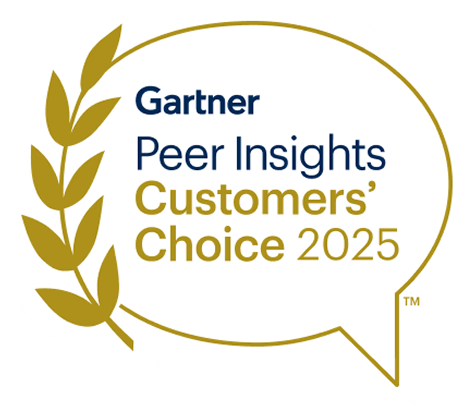Sentra’s 3-Year Journey: From DSPM to Data Security Platform
If you had searched for "DSPM" on Google three years ago, you likely would have only found information related to a dspm manufacturing website… But in just a few short years, the concept of Data Security Posture Management (DSPM) has evolved from an idea into a critical component of modern cybersecurity for enterprises.
Let’s rewind to the summer of 2021. Back then, when we were developing what would become Sentra and our DSPM solution, the term didn’t even exist. All that existed was the problem - data was being created, moved and duplicated in the cloud, and its security posture wasn’t keeping pace. Organizations didn’t know where all of their data was, and even if they could find it, its level of protection was inadequate for its level of sensitivity.
After extensive discussions with CISOs and security experts, we realized a critical gap between data security and the modern environments (further exacerbated by the fast pace of AI). Addressing this gap wasn’t just important—it was essential. Through these conversations, we identified the need for a new approach, leading to the creation of the DSPM concept, which didn't exist before.
It was thrilling to hear my Co-Founder and VP Product, Yair Cohen, declare for the first time, “the world’s first DSPM is coming in 2021.” We embraced the term "Data Security Posture Management," now widely known as "DSPM."
Why DSPM Has Become an Essential Tool
Today, DSPM has become mainstream, helping organizations safeguard their most valuable asset: their data.
"Three years ago, when we founded Sentra, we dreamed of creating a new category called DSPM. It was a huge bet to pursue new budgets, but we believed that data security would be the next big thing due to the shift to the cloud. We could never have imagined that it would become the world’s hottest security category and that the potential would be so significant."
-Ron Reiter, Co-Founder and CTO, Sentra
This summer, Gartner has released its 2024 Hype Cycle for Data Security, and DSPM is in the spotlight for good reason. Gartner describes DSPM as having "transformative" potential, particularly for addressing long-standing data security challenges. As companies rapidly move to the cloud, DSPM solutions are gaining traction by filling critical visibility gaps.
The best DSPM solutions offer coverage across multi-cloud and on-premises environments, creating a unified approach to data security. DSPM plays a pivotal role in the modern cybersecurity landscape by providing organizations with real-time visibility into their data security posture. It helps identify, prioritize and mitigate risks across the entire data estate. By continuously monitoring data movement and access patterns, DSPM ensures that any policy violations or deviations from normal behavior are quickly flagged and addressed, preventing potential breaches before they can cause damage.
DSPM is also critical in maintaining compliance with data protection regulations. As organizations handle increasingly complex data environments, meeting regulatory requirements becomes more challenging. DSPM simplifies this process by automating compliance checks and providing clear insights into where sensitive data resides, how it’s being used, and who has access to it. This not only helps organizations avoid hefty fines but also builds trust with customers and stakeholders by demonstrating a commitment to data security and privacy.
In a world where data privacy and security threats rank among the biggest challenges facing society, DSPM provides a crucial layer of protection. Businesses, individuals, and governments are all at risk, with sensitive information constantly under threat.
That’s why we are committed to developing our data security platform, which ensures your data remains secure and intact, no matter where it travels.
From DSPM to Data Security Platform in the AI Age
We began with a clear understanding of the critical need for Data Security Posture Management (DSPM) to address data proliferation risks in the evolving cloud landscape. As a leading data security platform, Sentra has expanded its capabilities based on our customers’ needs to include Data Access Governance (DAG), Data Detection and Response (DDR), and other essential tools to better manage data access, detect emerging threats, and assist organizations in their journey to implement Data Loss Prevention (DLP). We now do this across all environments (IaaS, PaaS, SaaS, and On-Premises).
We continue to evolve. In a world rapidly changing with advancements in AI, our platform offers the most comprehensive and effective data security solutions to keep pace with the demands of the AI age. As AI reshapes the digital landscape, it also creates new vulnerabilities, such as the risk of data exposure through AI training processes. Our platform addresses these AI-specific challenges, while continuing to tackle the persistent security issues from the cloud era, providing an integrated solution that ensures data security remains resilient and adaptive.
DSPMs facilitate swift AI development and smooth business operations by automatically securing LLM training data. Integrations with platforms like AWS SageMaker and GCP Vertex AI, combined with features such as DAG and DDR, ensure robust data security and privacy. This approach both supports responsible AI applications and also reduces risks such as breaches and bias. So, Sentra is no longer only a DSPM solution, it’s a data security platform. Today, we provide holistic solutions that allow you to locate any piece of data and access all the information you need. Our mission is to continuously build and enhance the best data security platform, empowering organizations to move faster and succeed in today’s digital world.
Success Driven by Our Amazing People
We’re proud that Sentra has emerged as a leader in the data security industry, making a significant impact on how organizations protect their data. Our success is driven by our incredible team, their hard work, dedication, and energy are the foundation of everything we do. From day one, our people have always been our top priority. It's inspiring to see our team work tirelessly to transform the world of data security and build the best solution out there.
This team of champions never stops innovating, inspiring, and striving to be the best version of themselves every day.
Their passion is evident in their work, as shown in recent projects that they initiated, from the new video series, “Answering the Most Searched DSPM Questions”, to a behind the scenes walkthrough of our data security platform, and more.
We’re excited to continue to push the boundaries of what’s possible in data security.
A heartfelt thank you to our incredible team, loyal customers, supportive investors, and dedicated partners. We’re excited to keep driving innovation in data security and to continue our mission of making the digital world a safer place for everyone.
<blogcta-big>










.webp)



